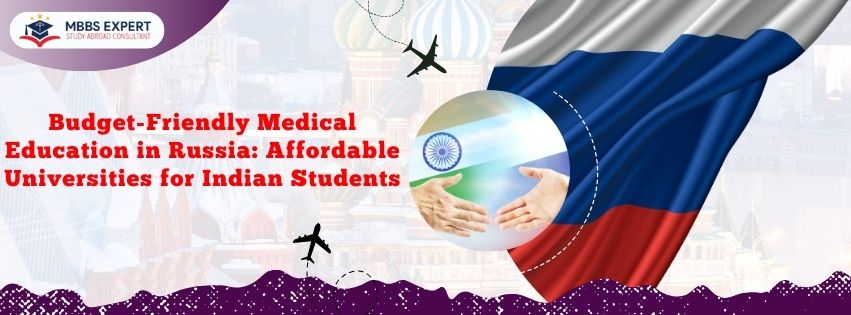Best and Affordable Medical Universities Abroad for Indian Students Pursuing an MBBS degree abroad has…
Chuvash State University MBBS Program: A Detailed Curriculum Overview for Indian Students
4473 Total Views , 1 views today
Chuvash State University MBBS Program: A Detailed Curriculum Overview for Indian Students
Chuvash State University offers a comprehensive MBBS program designed to equip students with the knowledge, skills, and clinical experience necessary for a successful career in medicine. The program is structured to meet international standards, ensuring that graduates are well-prepared to practice medicine globally. Here’s a detailed curriculum overview for Indian students considering the MBBS program at Chuvash State University.
1. Program Duration and Structure
The MBBS program at Chuvash State University spans six years, including five years of academic study and one year of compulsory internship. The curriculum is divided into pre-clinical and clinical phases, with a focus on foundational sciences in the initial years and clinical training in the later stages.
2. Pre-Clinical Phase (Years 1-2)
Year 1: Basic Sciences
- Anatomy: Introduction to human anatomy, including gross anatomy, histology, and embryology.
- Physiology: Study of the functions and mechanisms of the human body.
- Biochemistry: Understanding of biochemical processes and their relevance to health and disease.
- Medical Biology and Genetics: Fundamentals of genetics and molecular biology as they relate to medicine.
- Histology: Microscopic study of tissues and their structures.
Year 2: Advanced Basic Sciences
- Pathology: Introduction to the mechanisms of disease, including general and systemic pathology.
- Pharmacology: Study of drugs and their effects on the human body.
- Microbiology and Immunology: Examination of microorganisms, infectious diseases, and the immune system.
- Physiology: Continued exploration of human physiology with more complex systems.
- Community Medicine: Basics of public health, epidemiology, and preventive medicine.
3. Clinical Phase (Years 3-5)
Year 3: Transition to Clinical Medicine
- Pathophysiology: Study of the altered physiological processes in disease.
- Clinical Skills: Introduction to clinical examination techniques and patient interaction.
- Forensic Medicine: Basics of legal medicine and medical jurisprudence.
- General Surgery and Medicine: Fundamental principles of surgery and internal medicine.
Year 4: Clinical Rotations
- Internal Medicine: In-depth study and practical experience in internal medicine.
- General Surgery: Hands-on training in surgical procedures and patient management.
- Pediatrics: Study of child health, diseases, and pediatric care.
- Obstetrics and Gynecology: Comprehensive training in women’s health, childbirth, and gynecological diseases.
- Radiology: Introduction to imaging techniques and their clinical applications.
Year 5: Advanced Clinical Rotations
- Dermatology and Venereology: Study of skin diseases and sexually transmitted infections.
- Psychiatry: Basics of mental health, psychiatric disorders, and their management.
- Ophthalmology: Study of eye diseases and their treatment.
- Otorhinolaryngology (ENT): Diseases and treatment of the ear, nose, and throat.
- Orthopedics and Trauma: Basics of musculoskeletal diseases and trauma care.
- Elective Rotations: Opportunities to explore specialized fields of interest.
4. Internship (Year 6)
The final year is dedicated to a compulsory internship, where students gain hands-on experience in various medical specialties. This practical training is crucial for developing clinical skills and applying theoretical knowledge to real-world scenarios. Interns work under the supervision of experienced doctors, rotating through departments such as:
- Internal Medicine
- Surgery
- Pediatrics
- Obstetrics and Gynecology
- Emergency Medicine
- Community Medicine
5. Examinations and Assessments
Students undergo regular assessments, including written exams, practical exams, and oral tests, to evaluate their understanding and competency. The university follows a rigorous evaluation process to ensure students meet the required standards at each stage of the program.
6. Language of Instruction
The MBBS program is offered in English, ensuring that Indian students can follow the curriculum without language barriers. Additionally, students are encouraged to learn Russian to facilitate better communication with patients during clinical training.
7. Clinical Exposure and Facilities
Chuvash State University boasts modern facilities, including well-equipped laboratories, simulation centers, and affiliated teaching hospitals. Students gain extensive clinical exposure, participating in patient care, surgical procedures, and medical research.
Conclusion
Chuvash State University’s MBBS program provides a robust and comprehensive medical education for Indian students, emphasizing both theoretical knowledge and practical skills. With its structured curriculum, experienced faculty, and state-of-the-art facilities, the university prepares students for successful medical careers globally.
For more information and assistance with the admission process, Indian students can contact mbbsexpert consultancy at +919899954113 or email info@mbbsexpert.in. This consultancy offers expert guidance to ensure a smooth transition to studying MBBS at Chuvash State University.





